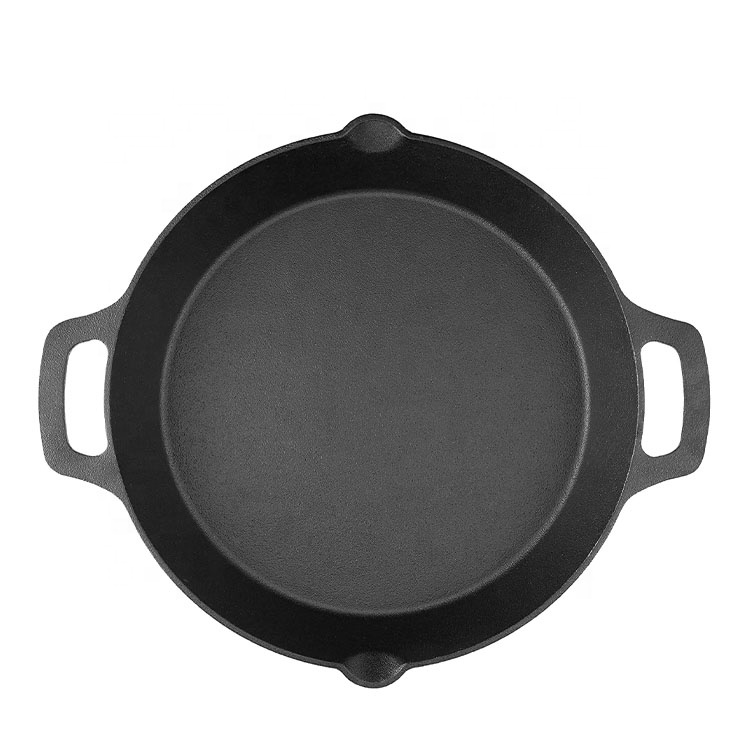
big wok pan
The Big Wok Pan A Culinary Essential for Modern Kitchens
When it comes to versatile cookware, few items can rival the big wok pan. Originating from traditional Chinese cooking, this pan has transcended cultural boundaries to become an indispensable tool in kitchens around the world. Its unique shape, robust construction, and remarkable cooking capabilities make it a favorite among home cooks and professional chefs alike.
The Design and Features of a Big Wok Pan
At first glance, the big wok pan stands out due to its wide, rounded bottom and tall, sloped sides. This design allows for even heating and encourages the swift movement of food, which is crucial for stir-frying—a cooking method that relies on high heat and quick preparation. Most wok pans are made from materials such as carbon steel or cast iron, which can withstand high temperatures and improve with use over time. Some modern woks come with non-stick coatings, making them easier to clean and suitable for health-conscious cooks.
One of the significant advantages of a big wok pan is its size
. Larger woks can hold more ingredients, making them perfect for preparing family meals or entertaining guests. The expansive surface area allows for cooking multiple ingredients simultaneously without overcrowding, which can lead to steaming instead of proper stir-frying. This feature is particularly beneficial for creating stir-fried dishes that require a crisp texture and vibrant flavors.Cooking Techniques and Versatility
The big wok pan is not limited to stir-frying—it is an incredibly versatile cooking tool. Besides stir-frying, it excels at steaming, boiling, deep-frying, and even making soups or broths. With a simple addition of a steamer basket, you can utilize the big wok for healthy steaming options like vegetables and fish. The high sides of the pan prevent splattering during deep-frying, allowing you to prepare crispy dishes such as spring rolls or fried rice with ease.
big wok pan

Furthermore, the wok's design encourages the use of high heat, which fosters the Maillard reaction—a chemical reaction between amino acids and reducing sugars that enhances flavor and creates a lovely sear on meats and vegetables. This property allows cooks to achieve that coveted ‘wok hei’ or ‘breath of the wok,’ an aromatic quality distinct to foods cooked in a well-seasoned wok.
Maintenance and Seasoning
To keep your big wok pan in prime condition, it requires proper care. For traditional carbon steel or cast iron woks, seasoning is essential. This process involves coating the pan with a thin layer of oil and heating it to create a non-stick layer. Over time, with continuous use, the wok develops a natural non-stick surface that enhances flavors and makes cleaning much simpler.
Washing your wok should be done carefully; avoid soap, which can strip the seasoning. Instead, a gentle scrub with hot water and a soft sponge is sufficient. Once dry, applying a thin layer of oil after cleaning is a good practice to maintain the seasoning.
Conclusion
The big wok pan is not merely a cooking vessel; it is a bridge between tradition and modern culinary practices. Its ability to adapt and perform various cooking techniques makes it a valuable addition to any kitchen. Whether you are whipping up a quick stir-fry for dinner or preparing an elaborate feast for friends, the big wok pan is sure to inspire culinary creativity and elevate your cooking experience. Embracing this versatile tool can transform your approach to food, encouraging healthy cooking methods while embracing flavors from around the globe. So, if you haven't yet introduced a big wok pan into your kitchen, now is the time to explore the endless possibilities it offers.
-
High Quality Kitchen Durable Black Round Cast Iron Cookware-Pancake Crepe Pan With Wooden Handle|Nonstick Surface&High-Temperature ResistanceNewsAug.08,2025
-
Durable Enamel Coated Pans: Easy Clean & Versatile CookwareNewsAug.08,2025
-
High Quality Kitchen Durable Black Round Cast Iron Cookware Pancake Crepe Pan With Wooden Handle-Baixiang County Zhongda Machinery Manufacturing Co. , Ltd.NewsAug.08,2025
-
High Quality Kitchen Durable Black Round Cast Iron Cookware Pancake Crepe Pan With Wooden Handle - Baixiang County Zhongda Machinery Manufacturing Co., Ltd.|Non-Stick, Heat Retention, Durable ConstructionNewsAug.07,2025
-
Cast Iron Cookware- Baixiang County Zhongda Machinery Manufacturing Co., Ltd.|Non-stick, Heat RetentionNewsAug.07,2025
-
Best Cast Iron Dutch Oven Pot: Versatile & Durable CookwareNewsAug.07,2025


